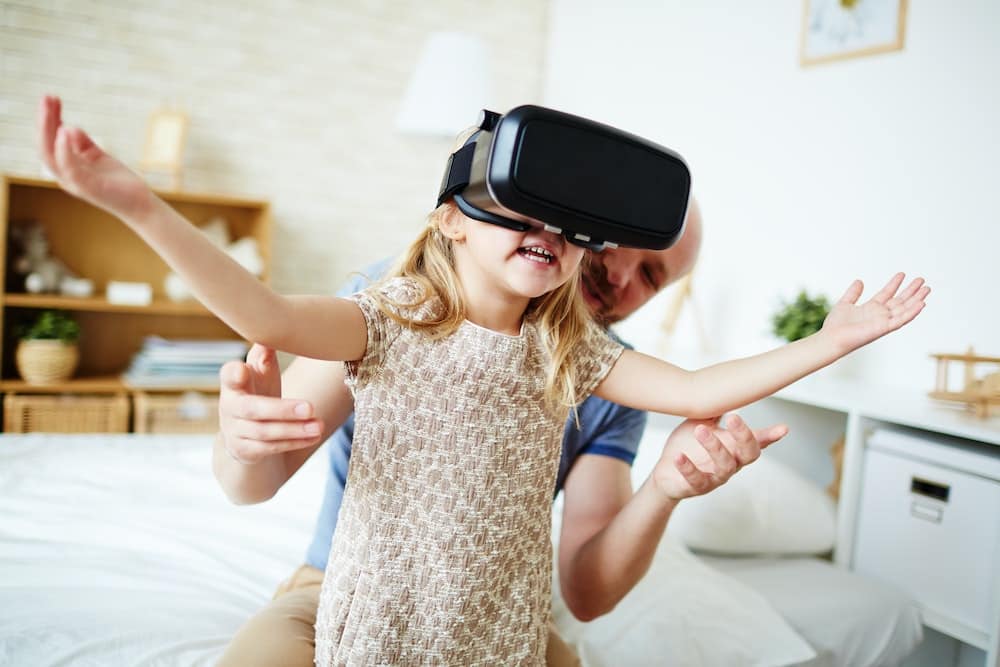What’s the Potential of Virtual Reality in Remote Team Building Activities?

In the past few years, our working landscape has been dramatically reshaped. The old school notion of sharing a physical office space no longer holds the monopoly, as more businesses step into the digital realm. A significant part of this transformation is the emergence of remote teams. However, fostering a unified virtual team can be a daunting task. Enter Virtual Reality (VR), a technology that offers exciting possibilities for team building and collaboration. Let’s explore the potential of VR in remote team building activities.
The Power of VR in Building Remote Teams
As virtual teams become increasingly commonplace, the challenges of building a cohesive team become more evident. Communication issues, lack of bonding, and isolation are the common culprits that hamper teamwork.
Cela peut vous intéresser : How do I find a car hire service in Costa Rica ?
However, VR can be the game-changer. It brings an immersive experience that not only provides a unique platform for communication but also promotes team building in a fun and engaging way. By leveraging VR, team members can interact as if they were in the same physical location, overcoming geographical boundaries and time zones.
A notable feature of VR is its ability to simulate real-world situations. This allows teams to conduct virtual meetings, workshops, and training sessions while adding a sense of realism. Businesses can also host virtual team building activities such as escape rooms, sports, or even a simple virtual coffee break. These activities enable employees to connect on a personal level, fostering trust and camaraderie.
A lire en complément : Exploring the latest from your it life services provider
Making Communication More Immersive with Virtual Reality
Communication is the lifeblood of any team. However, remote work can often lead to communication gaps and misunderstandings. VR technology addresses this challenge by providing immersive communication platforms where team members can collaborate in real-time.
With VR, team members can step into a shared virtual space, making interactions more dynamic and engaging. They can see each other’s avatars, pick up on non-verbal cues, and even share digital objects. This creates a seamless communication experience that transcends the limitations of traditional video conferencing tools.
Moreover, VR can support different meeting formats. From roundtable discussions to interactive presentations, the possibilities are endless. This flexibility allows teams to tailor their communication strategies according to their needs, thus enhancing productivity and collaboration.
Enhancing Team Building Activities with VR
Aside from its use in meetings and communication, VR brings a whole new dimension to team building activities. Traditional activities like icebreakers, role-plays, and group exercises can be transformed into immersive and engaging experiences.
Picture this: instead of a simple quiz over a video call, your team could take part in a virtual treasure hunt, solving clues and challenges in a fantastical landscape. Or, instead of a standard presentation, employees could step into a virtual stage, sharing their ideas with a live virtual audience. The fun and excitement that VR adds to these activities can significantly boost employee engagement and foster a stronger team spirit.
Moreover, VR also allows for experiences that may not be possible in the real world. Think of team-building games in zero gravity or under the sea. These unique experiences can leave a lasting impression, reinforcing bonds among team members.
The Challenges of Incorporating VR in Remote Team Building
While VR offers numerous benefits, incorporating it into remote team building isn’t without its challenges. The most significant is perhaps the cost and availability of VR equipment. Not all team members may have access to high-end VR headsets, making it difficult to create a uniform experience.
Additionally, not everyone is comfortable with VR technology. Some people may experience motion sickness or discomfort while using VR. Thus, businesses must consider the comfort and well-being of their employees when incorporating VR into team building activities.
Ensuring a secure and safe VR environment is another concern. Businesses must implement adequate security measures to protect sensitive information when conducting virtual meetings or events.
The Future of VR in Remote Team Building
Despite these challenges, the future of VR in remote team building looks promising. As technology advances and becomes more accessible, VR can be a powerful tool for creating a unified and engaged remote team.
Businesses are already exploring innovative ways to leverage VR, and this trend will only continue. From immersive meetings to captivating team building activities, VR is redefining team collaboration in the virtual workspace. While it may not replace traditional methods entirely, it will certainly supplement them, creating a hybrid model that combines the best of both worlds.
As we move forward, it’s crucial for businesses to stay on top of these technological advancements and understand how they can enhance their team building efforts. After all, a strong, cohesive team is at the heart of any successful business, and VR could be the key to achieving this in the new reality of remote work.
Leveraging VR for Problem Solving and Decision Making
In the realm of remote work, virtual teams often struggle with problem-solving and decision-making processes. Most of the traditional methods are not efficient in a digital setting, leading to misunderstandings, delays, and occasionally, poor decision making. This is where virtual reality can make a significant impact.
With VR, team members can join a shared virtual environment to collaborate on problem-solving tasks in real time. This could range from working together on a complex project, brainstorming new ideas, or making strategic decisions. The virtual space provides a sense of presence, mimicking the experience of solving a problem together in a physical room.
Moreover, VR can also create realistic simulations for scenario-based problem-solving exercises. Assume your team needs to respond to a crisis situation. Using VR, you can simulate the crisis, allowing your team to respond in real-time and learn from the experience without real-world consequences.
Similarly, VR can enhance decision-making processes. Visual representations or models can be created in the virtual space, enabling team members to evaluate different solutions from multiple perspectives. This interactive and visual approach can lead to more informed decision-making, reducing the risk of errors.
However, it’s important to ensure that the use of VR aligns with the team’s needs and capabilities. The implementation must be planned and executed carefully to ensure it adds value and does not become a distraction or a source of frustration.
Maximizing the Potential of VR for Remote Collaboration
Remote collaboration is key to the success of any virtual team. However, achieving effective collaboration can be challenging due to factors like time zone differences, communication barriers, and lack of face-to-face interaction. VR can help overcome these obstacles by providing an immersive and interactive platform for remote collaboration.
In a virtual environment, team members can work together as if they were in the same room. They can share virtual objects, make annotations, and manipulate digital models together. This immersive experience fosters a more robust collaborative spirit, where ideas can flow freely, and teams can work together more efficiently.
Virtual reality can also enhance remote collaboration through building exercises. These can range from collaborative games that promote communication and cooperation to project-based exercises that require collective problem-solving and decision-making. These exercises can be a fun and effective way to strengthen remote teams, foster trust, and reinforce shared goals.
Furthermore, VR could be used for peer-to-peer learning and mentoring. Experienced team members can guide newcomers through complex tasks within a virtual space, providing real-time feedback and assistance. This can fast-track the learning process and enhance team synergy.
However, while VR offers significant potential, it’s vital to remember that it’s just one tool in a broader toolkit. It should be complemented with other communication and collaboration tools to maximize effectiveness.
Conclusion: Embracing the Reality of Virtual Team Building
The landscape of team building is changing, and virtual reality is leading the charge. Its potential to transform remote team collaboration, problem-solving, and building activities is undeniable. However, like any tool, its effectiveness will depend on how well it’s used.
Businesses should assess their needs, resources, and capabilities before integrating VR into their team building strategies. It’s essential to ensure that all team members are comfortable with the technology and have the necessary equipment. Training and support should be provided to help them make the most of this new tool.
While there are challenges to overcome, the benefits of VR in remote team building can outweigh the difficulties. With careful planning and execution, VR can help businesses cultivate a strong and cohesive remote team, ready to tackle any challenge in the digital age.
As we look towards the future, it’s clear that VR will play an increasingly significant role in team building. Therefore, it’s crucial for businesses to understand and harness the power of VR to stay competitive in the ever-evolving world of remote work. The journey into the virtual realm has only just begun, and the possibilities are endless.
